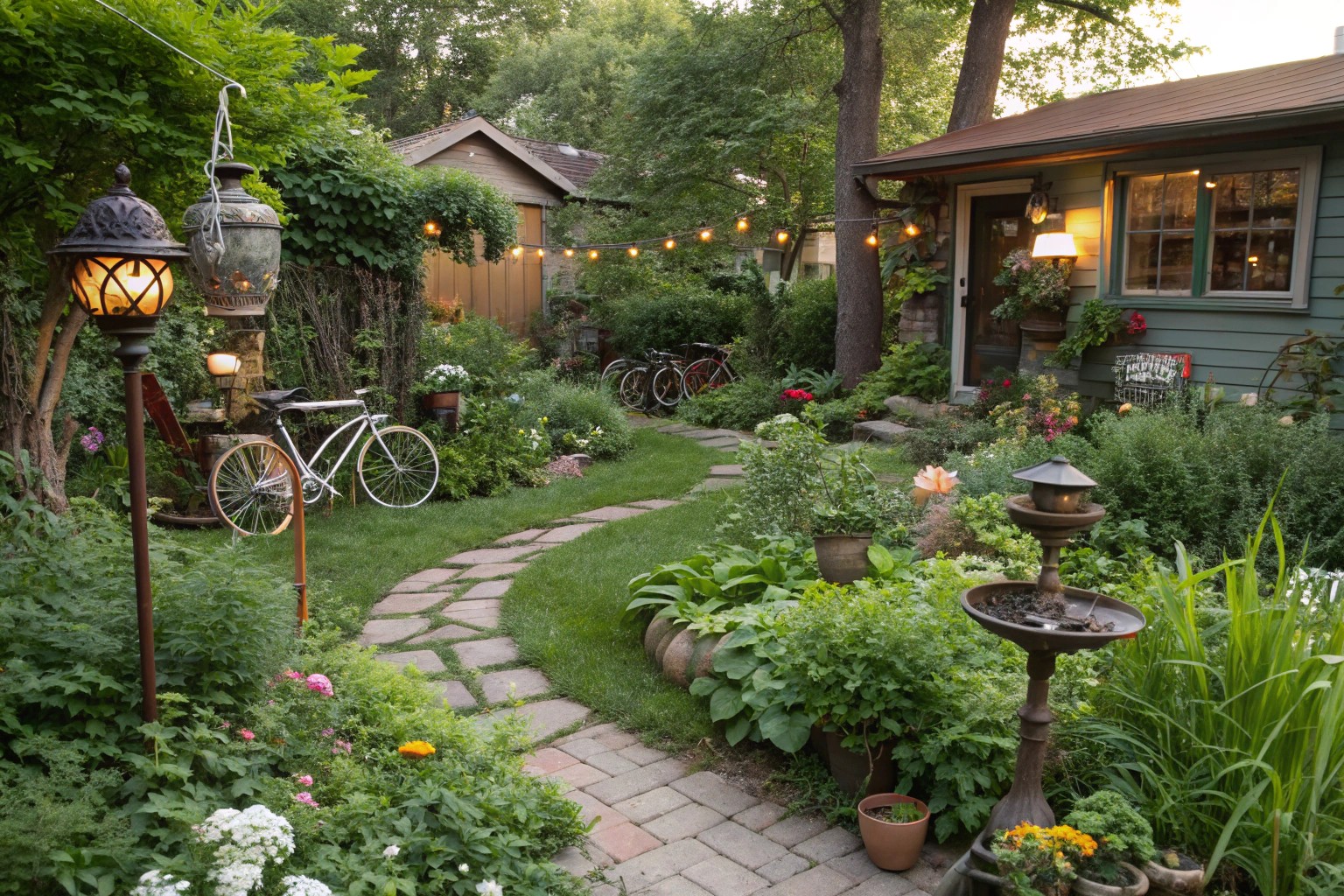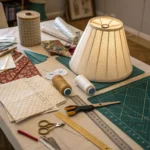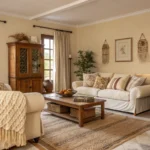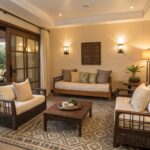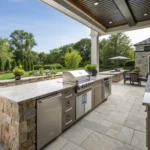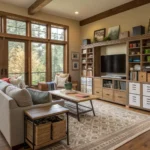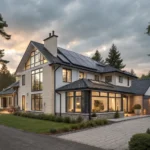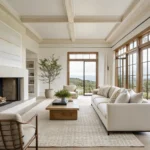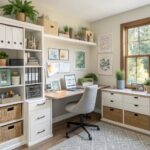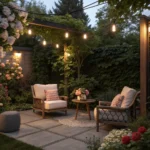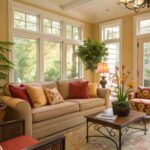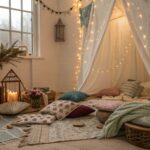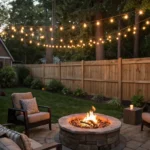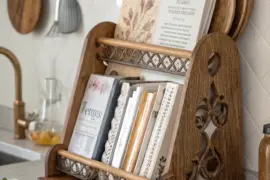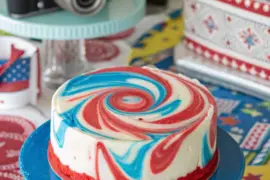Found objects offer an authentic, cost-effective way to create compelling focal points that ground your landscape design while expressing personal character. This approach transforms discarded materials into purposeful design elements that serve as visual anchors, drawing the eye and creating meaningful connections between indoor and outdoor living spaces.
Understanding Design Anchors in Landscape Architecture
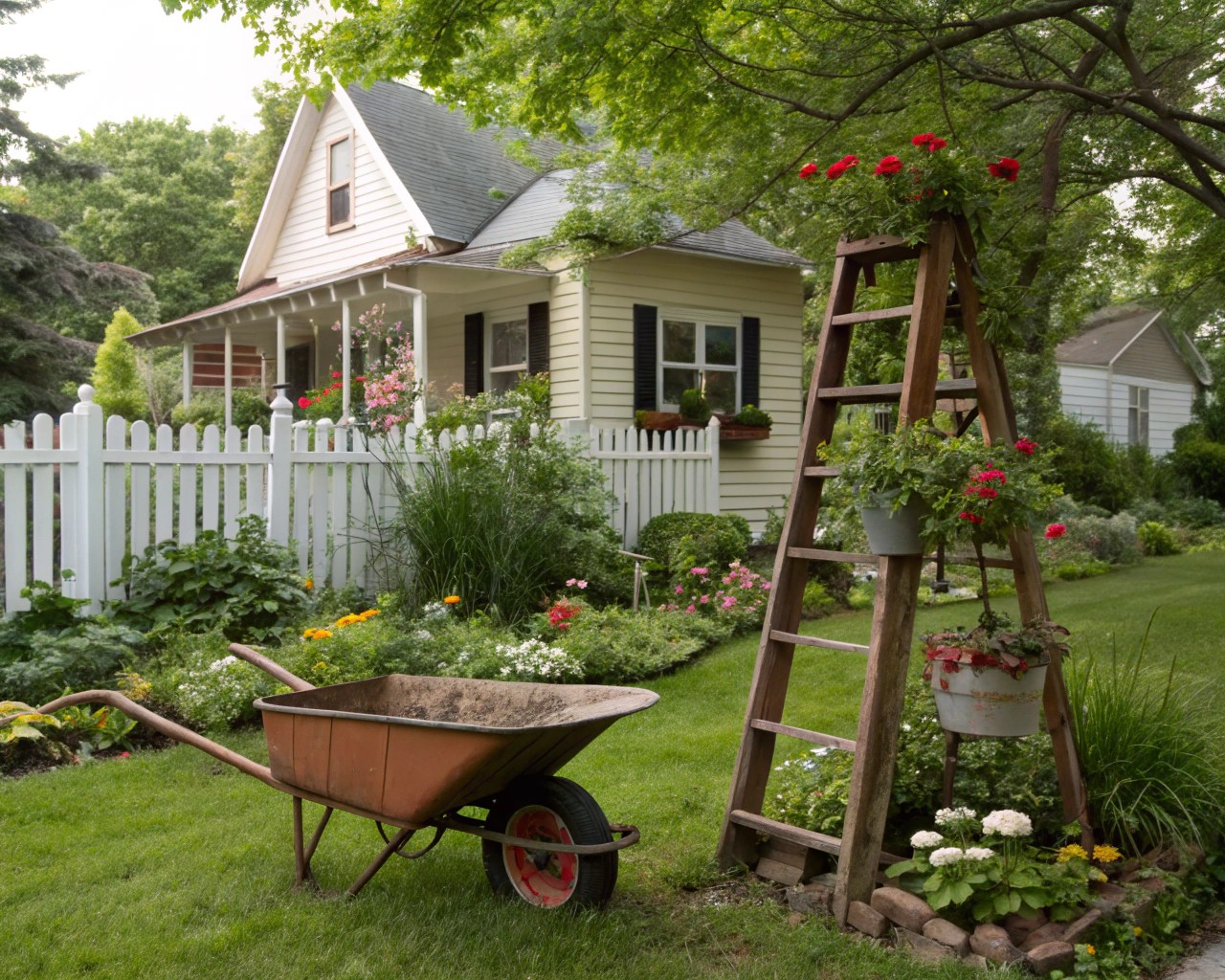
Design anchors function as visual foundations that provide stability and focus within a composition. When we incorporate found objects as anchors, we’re essentially placing strategic focal points that guide the viewer’s experience through a space. These elements serve multiple purposes: they create visual weight, establish rhythm, and often tell a story that connects the inhabitants to their environment.
The concept goes beyond simple decoration. As landscape professionals, we understand that anchor elements must feel intentional rather than arbitrary. A well-chosen found object can serve the same sophisticated purpose as expensive sculpture, but with added layers of meaning and authenticity.
The Psychology of Found Object Anchors

Found objects carry inherent narratives that new materials cannot replicate. When I work with clients, I often observe how a weathered garden gate or repurposed architectural element immediately sparks conversation and emotional connection. This phenomenon occurs because found objects possess what the Japanese call “wabi sabi” – the beauty found in imperfection and the patina of time.
Sourcing and Selecting Found Objects
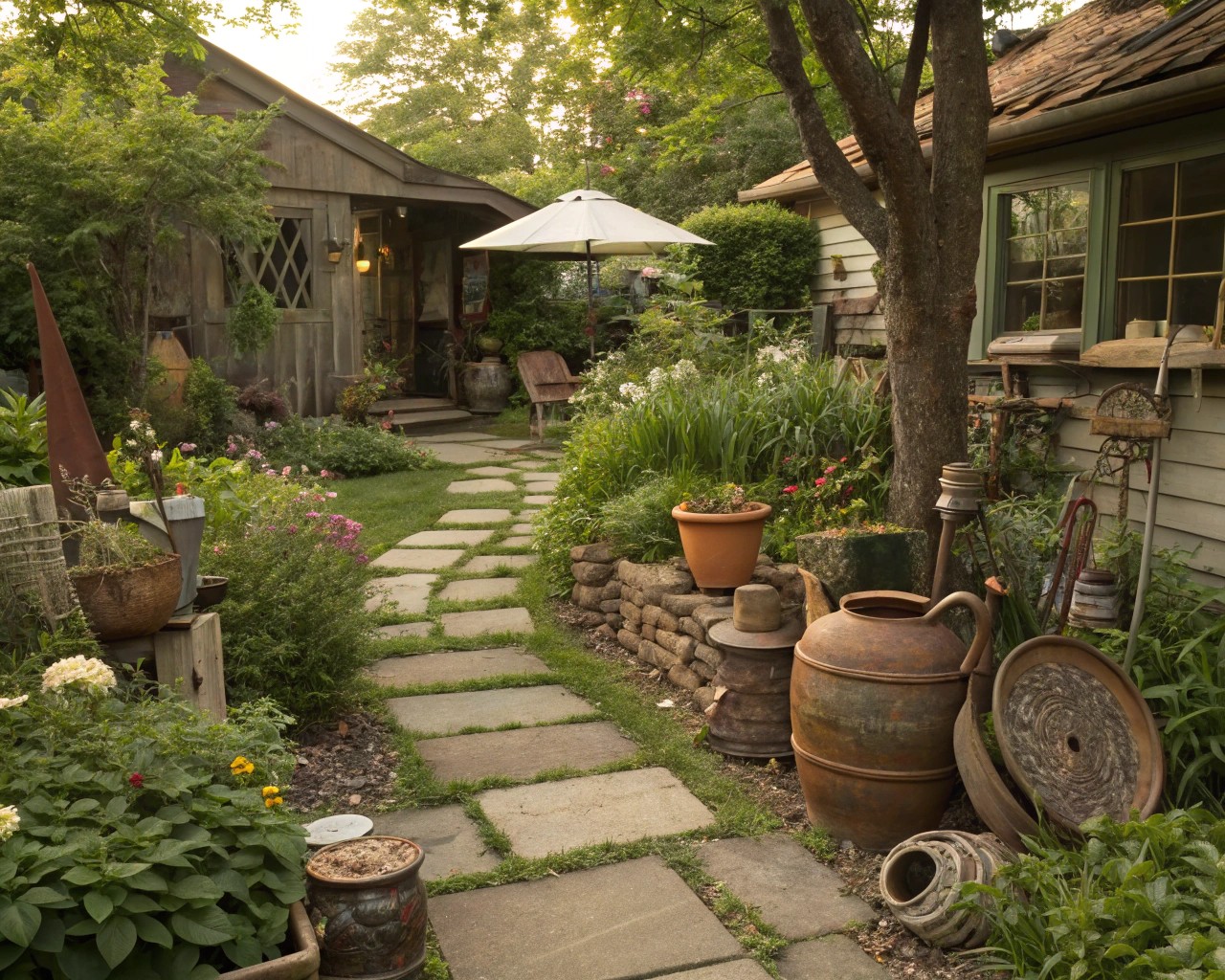
Strategic Hunting Grounds
The most effective found objects often come from unexpected sources. Here’s where to focus your search efforts:
Primary Sources:
- Architectural salvage yards – Offer substantial pieces like columns, gates, and decorative ironwork
- Estate sales and auctions – Provide unique items with historical character
- Construction sites (with permission) – Yield interesting materials like weathered wood and metal fixtures
- Thrift stores and garage sales – Supply smaller decorative elements and unusual containers
Secondary Sources:
- Online marketplaces – Check Craigslist’s “free” section and Facebook Marketplace for building materials
- Agricultural areas – Farm equipment and tools make excellent sculptural elements
- Industrial sites – Gears, machinery parts, and metal fixtures offer geometric interest
Selection Criteria Matrix
When evaluating potential found objects, I use this assessment framework:
| Criteria | Excellent | Good | Poor |
|---|---|---|---|
| Structural Integrity | Solid, stable foundation | Minor repairs needed | Unsafe or unstable |
| Weather Resistance | Naturally weatherproof materials | Can be treated/sealed | Will deteriorate quickly |
| Scale Appropriateness | Perfect proportions for space | Slightly over/undersized | Completely wrong scale |
| Visual Interest | Unique texture, form, or patina | Some interesting features | Generic appearance |
| Narrative Value | Strong story or historical connection | Mild personal connection | No meaningful association |
Material Considerations for Durability

Different materials require specific approaches for long-term success:
Metal Objects:
- Corten steel naturally develops a protective rust patina that self-seals
- Stainless steel requires periodic cleaning but remains pristine
- Cast iron benefits from protective coating application
Wood Elements:
- Choose naturally rot-resistant species like cedar, teak, or redwood
- Apply marine-grade sealers for enhanced longevity
- Consider placement to minimize ground contact
Stone and Ceramic:
- Verify freeze-thaw resistance in cold climates
- Ensure proper drainage to prevent cracking
- Position heavy pieces on stable foundations
Design Principles for Effective Placement
The Rule of Visual Weight
Found objects must be positioned to create balance without overwhelming the surrounding landscape. I typically use the triangle principle: imagine your space divided into triangular sections, with anchor objects placed at key points to create visual stability.
Sight Line Considerations:
- Position primary anchors to be visible from indoor living spaces
- Create sequential discoveries along pathways
- Use smaller found objects to guide movement between major focal points
Scale and Proportion Guidelines
The relationship between your found object and its surroundings determines success or failure. Here’s my approach:
For Small Spaces (under 500 sq ft):
- Single anchor object, maximum 3-4 feet in height
- Complement with 2-3 smaller supporting elements
- Maintain clear sight lines to prevent crowding
For Medium Spaces (500-2000 sq ft):
- Primary anchor plus 1-2 secondary elements
- Height variations between 2-6 feet work well
- Create visual triangles connecting anchor points
For Large Spaces (over 2000 sq ft):
- Multiple anchor zones with different themes or materials
- Heights can range from 4-10 feet depending on context
- Use repetition of materials to create cohesion
Contextual Integration Strategies
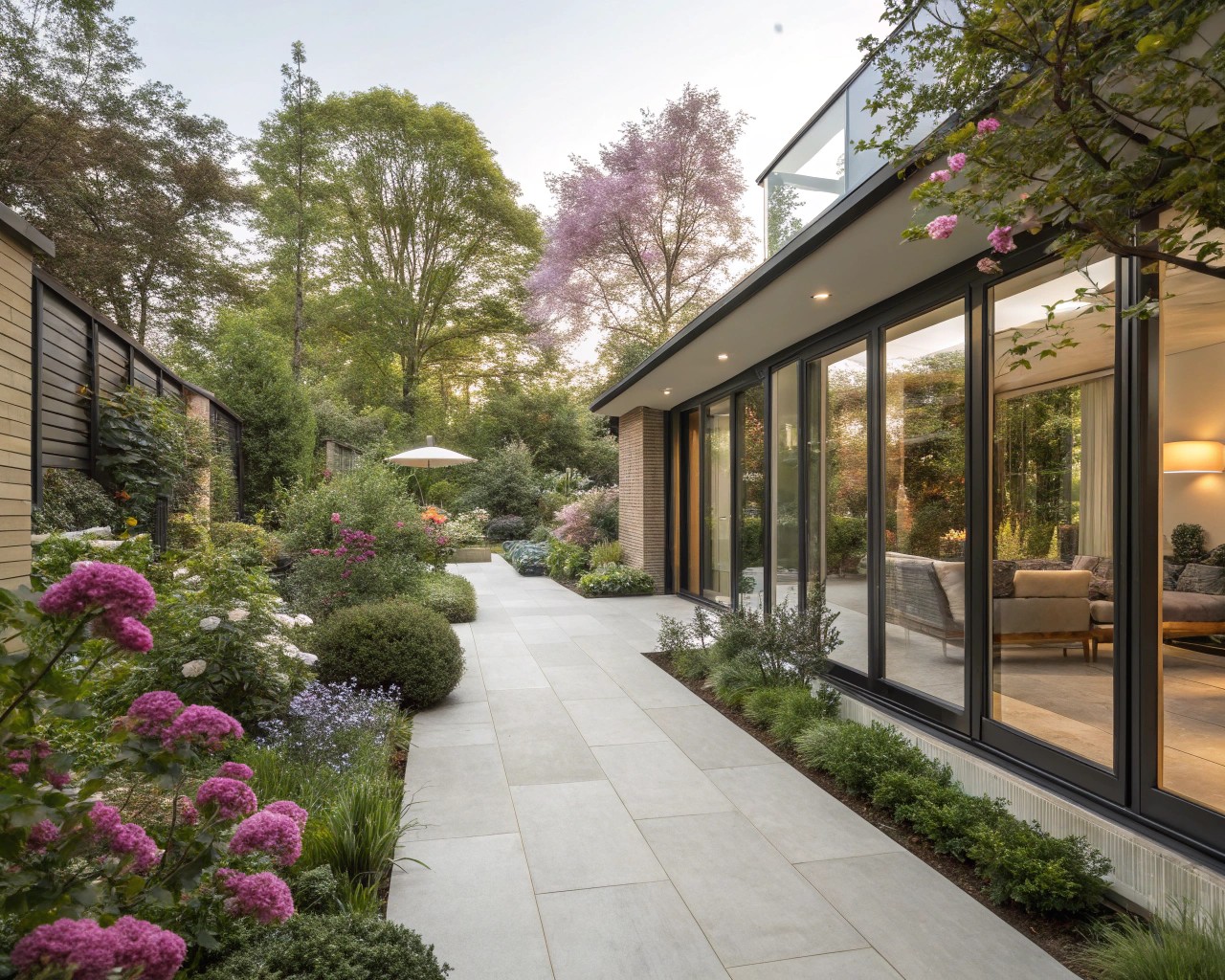
Found objects should feel like natural extensions of your design rather than foreign additions. I achieve this through:
Material Echoing:
- If your home features brick, incorporate weathered brick elements
- Match metal objects to existing hardware finishes when possible
- Use similar color palettes throughout the design
Functional Integration:
- Convert old furniture into planters or display surfaces
- Transform architectural elements into plant supports or trellises
- Repurpose containers as water features or bird baths
Installation Techniques and Technical Considerations
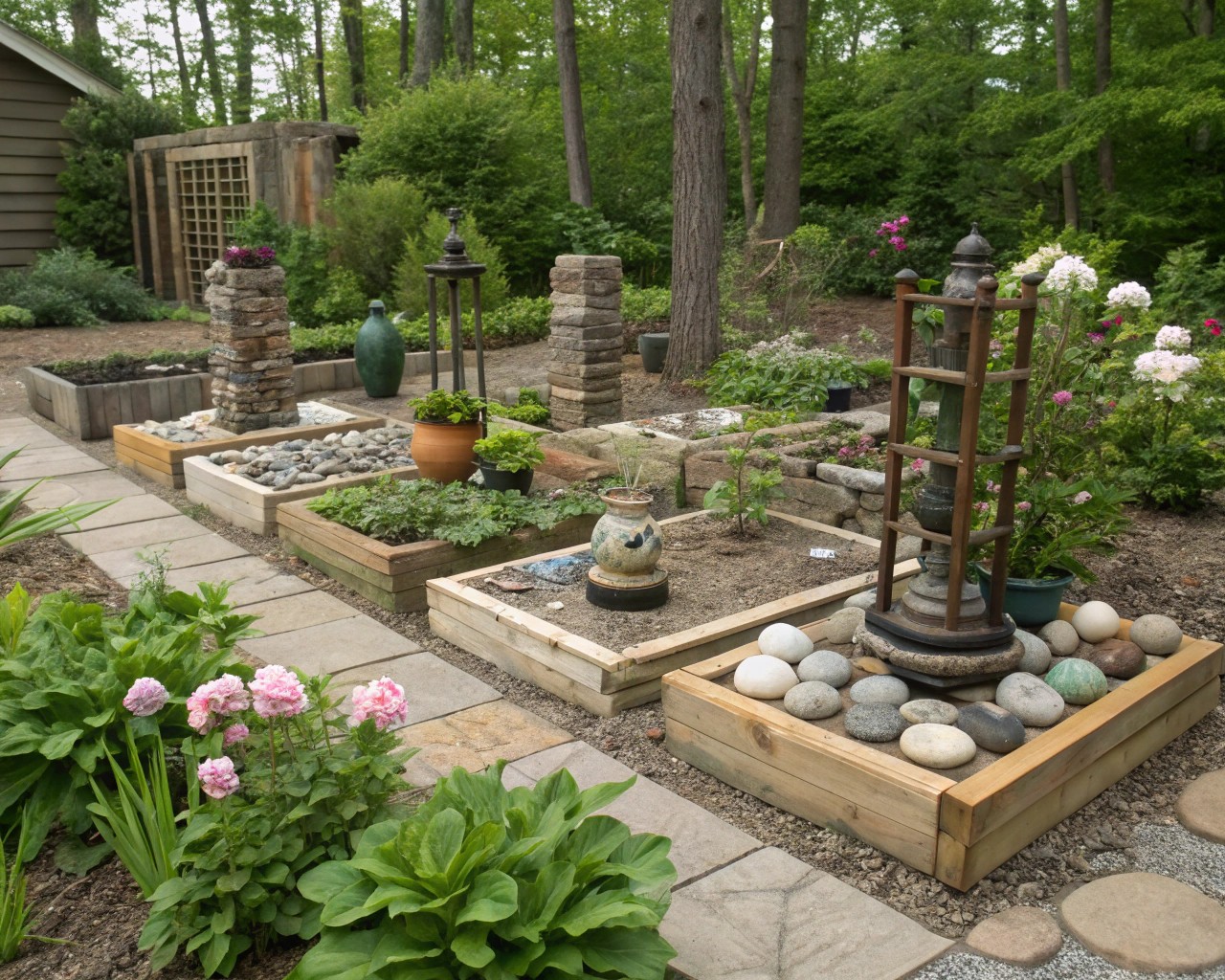
Foundation and Stability Requirements
Proper installation ensures your found object anchors remain effective over time. The approach varies significantly based on object type and placement:
Ground-Level Installation:
1. Excavate 18-24 inches deep for substantial pieces
2. Create drainage layer with 4-6 inches of gravel
3. Level and compact base materials thoroughly
4. Secure object using appropriate anchoring system
Elevated Placement:
- Use pedestals or platforms to increase visual prominence
- Ensure adequate structural support for the combined weight
- Consider wind load factors for tall or sail-like objects
Weatherproofing and Preservation
Different materials require specific preservation approaches:
Metal Treatment Process:
1. Clean thoroughly to remove existing rust or debris
2. Apply primer specifically designed for metal surfaces
3. Seal with marine-grade protective coating
4. Inspect annually and touch up as needed
Wood Preservation:
- Sand surfaces to remove splinters and loose material
- Apply penetrating oil stain followed by protective clear coat
- Reapply treatment every 2-3 years depending on exposure
Mixed Material Objects:
- Address each material component separately
- Use compatible products that won’t create chemical conflicts
- Test treatments on inconspicuous areas first
Creating Cohesive Compositions
Grouping Strategies
Successful found object installations often involve multiple elements working together. I use these grouping principles:
The Odd Number Rule:
- Groups of 3, 5, or 7 objects create more visual interest than even numbers
- Vary heights and sizes within each grouping
- Maintain consistent spacing between elements
Material Harmony:
- Limit palette to 2-3 primary materials per composition
- Allow for textural variation within material types
- Use color as a unifying element across different materials
Seasonal Considerations
Found objects should work effectively throughout the year:
Winter Performance:
- Choose pieces that look attractive with snow accumulation
- Ensure structural integrity under ice load
- Consider bringing fragile elements indoors during harsh weather
Summer Integration:
- Plan for plant growth around and through objects
- Provide adequate clearance for maintenance access
- Consider heat expansion of metal elements
Maintenance and Long-Term Care
Annual Inspection Protocol
Establish a systematic approach to maintaining your found object anchors:
Spring Assessment:
- Check for winter damage or movement
- Clean accumulated debris and organic matter
- Apply protective treatments as needed
Summer Monitoring:
- Trim vegetation that may interfere with visibility
- Inspect for pest habitation in hollow objects
- Ensure drainage systems remain clear
Fall Preparation:
- Secure loose elements before winter weather
- Apply final protective coatings
- Remove seasonal decorative additions
Repair and Restoration Techniques
When found objects show wear, strategic repair can extend their effectiveness:
Structural Repairs:
- Weld cracks in metal pieces using appropriate techniques
- Replace deteriorated wood sections with compatible materials
- Stabilize loose masonry with appropriate adhesives
Aesthetic Restoration:
- Embrace controlled aging rather than fighting natural patina
- Touch up protective coatings while maintaining character
- Clean selectively to preserve interesting weathering patterns
Case Studies in Successful Implementation
Urban Courtyard Transformation
A recent project involved transforming a 400-square-foot urban courtyard using salvaged industrial elements. The centerpiece was a weathered steel gear assembly mounted on a custom pedestal, creating a 6-foot vertical anchor. Supporting elements included smaller gears arranged at ground level and repurposed metal containers serving as planters.
Results:
- Increased property value by approximately 15%
- Created year-round visual interest
- Sparked numerous neighbor conversations and connections
Suburban Garden Integration
In a larger suburban setting, we incorporated a series of vintage chairs positioned strategically throughout the landscape. Wild plants were encouraged to grow through the chair frames, creating living sculptures that evolved seasonally.
Key Success Factors:
- Varied chair heights from 30-48 inches
- Used rust patina to unify different chair styles
- Positioned chairs to frame views of planted areas
Economic and Environmental Benefits
Cost Analysis
Found object anchors typically cost 60-80% less than equivalent new sculptural elements:
Traditional Sculpture Approach:
- Professional sculpture: $2,000-15,000+
- Installation: $500-2,000
- Total: $2,500-17,000
Found Object Approach:
- Object acquisition: $50-500
- Restoration materials: $100-300
- Installation: $200-800
- Total: $350-1,600
Environmental Impact
Using found objects diverts materials from landfills while reducing demand for new manufactured goods. A single large found object anchor can prevent 200-500 pounds of material from entering waste streams while eliminating the carbon footprint associated with manufacturing and shipping new decorative elements.

